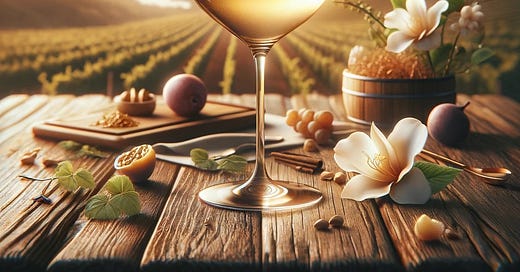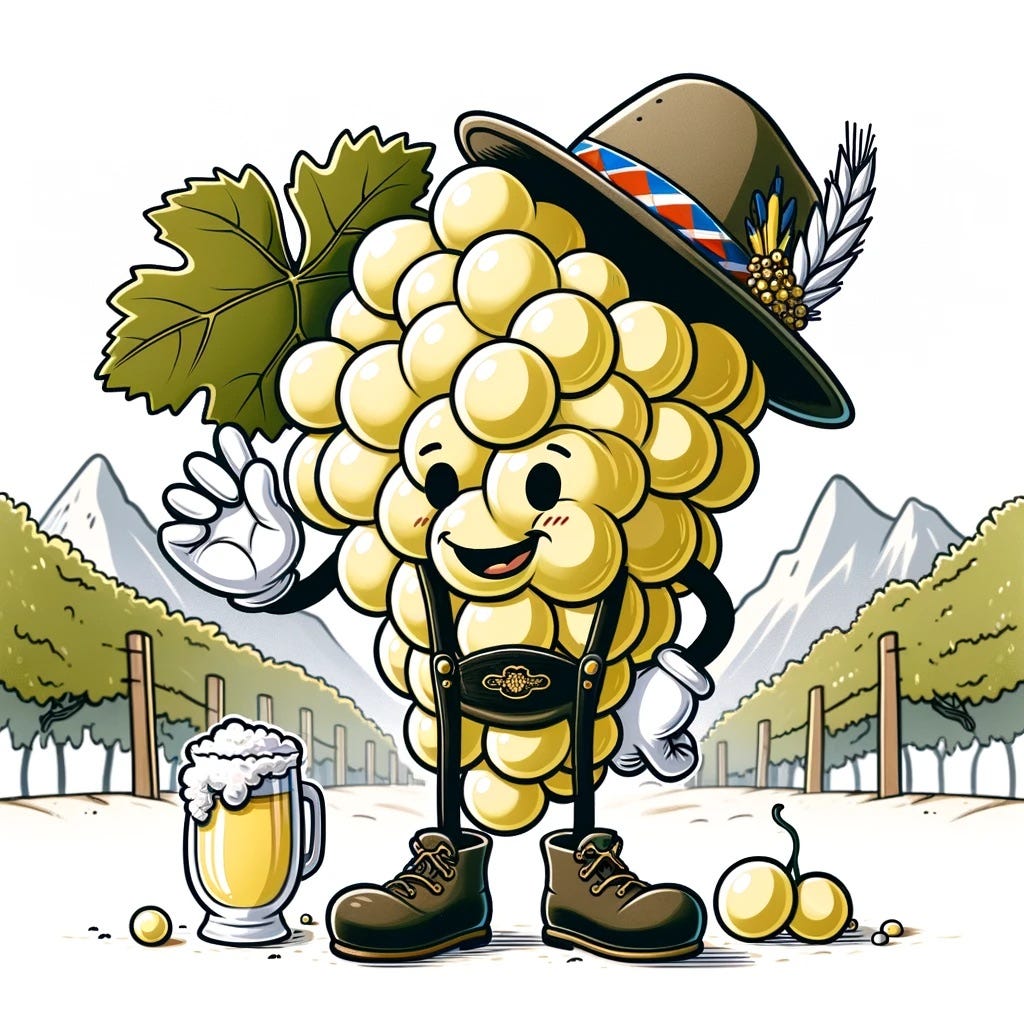NAPA VALLEY, Calif. — On my first day of residence in Northern California as a San Diego refugee to Sonoma County, I encountered another relocated southern Californian who had a vision.
It was March 1986. He said he had purchased land in Alexander Valley and planned to plant grapes and become a serious home winemaker. I asked him what his main grape variety would be. He proudly said he was going to plant an acre of gewürztraminer.
“Why gewurz?” I asked.
“I love that variety!” he said.
Rather than burst his bubble and sound like a jerk, I merely suggested that he consult a vineyard specialist first. Two years later I ran into him at a wine tasting. He said, “Thanks, you saved me some time and money. I never planted that gewurz.”
If you want to make good wine, nearly every grape variety ideally should be planted in the proper location to maximize that grape’s potential; Choosing the wrong location often ends in disaster. In the case of gewürztraminer, location is critical. It is best planted in well-drained soils in cool or cold climates. Almost anywhere else is not only dicey but occasionally disastrous. That’s why this gentleman’s original idea of putting gewürztraminer in Alexander Valley wasn’t exactly brilliant.
It is a variety that grows well in cool Alsace, in cold Germany (where it is planted in limited areas), cool Russian River Valley, cool to cold Anderson Valley, cooler pockets of California’s Central Coast, wind-raked New Zealand and cold areas in North America, such as in New York’s Finger Lakes region. One of the best I ever tasted came from a very high-altitude (6,000 feet) vineyard in Colorado.
This grape, which produces off-dry wines that work beautifully with spicy Thai or other Asian foods, poses significant challenges for grape-growers and winemakers because it is not similar to other traditional white-wine grapes. In some ways, it probably should be treated in the vineyard and the winery more like pinot gris, with which it shares an interesting relationship.
Both grapes have a fascinating pigment problem. Toward the end of the growing season, the two varieties display slightly darker skin tones, sort of pinkish, indicating that the resulting wines will be slightly like rosés. That’s because both grapes are cursed with having more tannins than other white-wine grapes. Tannins (wine geeks call them leucoanthocyanins) are bitter, which can be prominent in wines with higher alcohol levels and can be unpleasant.
Which is why the best gewürztraminers usually are intentionally made with some residual sugar, which can mask bitterness. But when the sugar is slightly too high, the wine can be too sweet to work with savory foods. It is especially risky to pair 8 grams per liter (0.8%) of sugar with alcohols above 14%. Unfortunately, some gewürztraminers are made with more than 1% residual sugar and are unbalanced and too sweet for almost any food. Controlling this delicate balance is partially the responsibility of the grape grower.
Gewürztraminer ideally should be picked at the peak of balance between sugar and acid, and the best way to determine that is to taste the grapes before harvest. The brilliant winemaker André Tchelistcheff once told me that to make a good gewürztraminer, “you must sleep in the vineyard.”
Fortunately, gewürztraminer is best harvested early to mid-season. It usually yields a small crop but is more difficult to pick than other grape varieties because it has small clusters.
Because of its high tannin levels, the best way to make it is to press it lightly to minimize tannin extraction. This means a slightly smaller amount of juice is used, meaning the resulting wine often is a little more expensive to make. Pressing too heavily potentially extracts higher levels of tannin, which might require more sugar to offset the bitterness, which then calls for slightly higher acidity to balance off the sugar. It’s a delicate balance.
Also, it should be fermented cool or cold to preserve the delicate aromatics, but extremely cool fermentations are slower, and the slower the fermentation is, the riskier it is for the wine since that invites the development of aromatic flaws.
Moreover, developing gewürztraminer’s exotic aromatics can be difficult. Some of them might not develop perfectly if the wrong yeast strain is chosen. Specific yeasts have been developed that are best for gewürztraminer. The wrong yeast choice can make a good wine, but some gewürztraminer specialists say that a great wine can be achieved only with the ideal yeast.
Simply put, gewürztraminer isn’t exactly perfect for winemakers who don’t have the patience to babysit this petulant annoyance.
Also problematic is how to market it. As a hard-to-pronounce wine, gewurztraminer (geh-VERTS-trah-mee-ner) retail sales are best done by handselling, which occasionally means training store clerks in how to say it. It’s slightly easier to sell gewürztraminer in restaurants where Asian foods favor its flavors and where off-dry styles pair ideally with the spiced foods. Among those foods with which it does best are Indian curries, mulligatawny soups, pad thai, kung pao chicken and well-seasoned ramens.
The driest versions of gewürztraminer usually are made by people who have made it for decades and understand what the fruit looks and tastes like when it is still on the vine. Among the best examples in California for 40 years are those from Navarro Vineyards in Mendocino County. Winemaker Jim Klein and owner Ted Bennett know the precise pink tinge that the grapes begin to display just before harvest. Anderson Valley is a great place to make such wines, and Husch gewürztraminers from there are reliably superb, as well.
Harkening back to Tchelistcheff’s line about sleeping in the vineyard, knowing the precise color of the grapes, tasting them before harvest and making the wine for decades all help to make a fine-tuning decision slightly easier.
Some people say that France’s northerly Alsace district produces the finest gewürztraminer in the world, most of them in an off-dry style. Some Alsace producers now make gewürztraminers that are softer and sweeter than they once were. Most have heady rose-petal and carnation scents. Sweeter versions can be paired with desserts.
I often find that the best New World gewürztraminers offer aromatics that start with gardenia and can include lychee nuts, muscat and a trace of passion fruit. Look for versions that do not exceed 14% alcohol.
Wine Discovery
2022 Lula Gewürztraminer, Anderson Valley ($27): The rare combination of tropical florals and subtle exotic spices combine in this excellent example of how gewürztraminer can be both wildly aromatic and delicately food-oriented as well. The aromatic intrigue includes a lemon-mint quality along with a trace of baby carnations and a whiff of ginger. The wine has a slight bit of residual sugar, but because its alcohol is moderate (13.5%), it delivers a lovely crispness that allows it to work with dishes as unusual as white fish seasoned with lavender or cardamom. The magic of this wine is that its sugar is so subtle that it works with a wide array of delicate foods.
If today’s story captured your interest, explore these related articles:
Dan Berger's wine country chronicles: The power of pronunciation
Dan Berger's Varietal Views: Delving into riesling's complex profile
Dan Berger has been writing about wine since 1975.







Dan,
Gewurz doesn't get nearly enough press, especially via the Anderson Valley producers who are veterans at it, like Navarro and Husch. I was pleased to read your article and see those old-school producers highlighted.
One that you didn't mention (but are no doubt familiar with) is the late, great Lazy Creek. At various times in the mid-90s, I carried Navarro and Lazy Creek gewurztraminers on the wine list at Flying Saucer restaurant in SF. I can still distinctly remember how those wines tasted -- not bad for a guy who's otherwise killed off a few brain cells in the intervening years.
Good Article. Finding a Gewurz on the market for class is one of my problems. I just used AVV's. And I will tell you, EVERY time I pour Gewurz for my class they love it! I had the distributor get into a local wine shop for that reason.